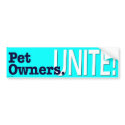Before we launch ourselves into the brawl, Ms. X would like to write a public disclaimer. She has no accredited nutritional or medical training. Nothing she writes should be construed as advice. So there. You're on your own. But you all ready knew that. That's why you are here, right?
Never fear. Ms. X isn't the type to rest on her own laurels anyway. Her only job is to switch on the truthlight.
Let's focus on kibble first. A lot of pet owners ask, "I can buy a 50 pound bag of Ol' Roy at Walmart for 20 dollars. Why should I buy some expensive bag of kibble that costs more than my family's food?" "What's wrong with kibble?"
Good question. The answer is "probably nothing". That's right. Millions and millions of dogs (and cats) have lived reasonably long and reasonably healthy lives on crap-in-a-bag, and some argue that pet breeding should focus on pets that thrive on "crapple".
It really is a difficult position to argue with, so Ms. X will simply say that taking that argument to its logical conclusion, the pet food corporations should also take over the breeding. They just need to expand their feeding trials a bit, team up with the registries and viola! You want a Hills puppy or a Purina kitten?
We're not actually too far from that, are we?
Ms. X, being of a more natural bent, would prefer to breed her own dogs (she doesn't), hunt her own meat (she doesn't), and farm her own vegetables (she tries).
So why not feed kibble? Well, I do sometimes. Overall though, I want better. My requirements for store bought food are simple: No vegetable oil. No carrageenan or gums. No grains. No soy. Easy, right? There are a lot of little things too, but those are the things I simply won't pay for.
Let's look at kibbles available. On the cheap end of the spectrum is the aforementioned Ol' Roy. The ingredients are pretty benign at first glance.
Ol' Roy Complete Nutrition (ingredient list is from dogfoodadvisor). Ground yellow corn, meat and bone meal, soybean meal, poultry by-product meal, animal fat (preserved with BHA and citric acid), corn gluten meal, natural flavor, brewers rice, salt, potassium chloride, color added (titanium dioxide, yellow #5, yellow #6, red #40, blue #2), choline chloride, zinc sulfate, vitamin E supplement, ferrous sulfate, zinc oxide, niacin, copper sulfate, vitamin A supplement, biotin, manganous oxide, calcium pantothenate, vitamin B12 supplement, thiamine mononitrate, pyridoxine hydrochloride, menadione sodium bisulfite complex (source of vitamin K activity), riboflavin supplement, sodium selenite, calcium iodate, folic acid, vitamin D3 supplement, cobalt carbonate
Of the major "no-no's", soybean meal is the obvious.
Soybeans are awful in 99% of formations.
Bone meal is sometimes high in heavy metal contaminants.
BHA - love the animal fat, but not fond of the carcinogenic preservative. Corn gluten meal - corn is a grain, corn gluten meal, like the soybean meal, is a cheap low-quality protein. And then there are the added colors.
Red #40 alone is notorious.
Well, maybe for a little more money, we can do better.
For a "middle of the road" kibble, let's look at something we have all heard of. If you own a TV, you have seen the commercials for Blue Buffalo. They advertise constantly, claim they are better than other leading dog foods, and believe it or not, the advertising works! Internet forums are full of people who have "made the switch". So why not Ms. X? Well, here are the Blue Buffalo ingredients.
Life Protection Formula Lamb & Brown Rice Recipe for Adult Dogs
Deboned Lamb, Oatmeal,
Whole Ground Barley, Turkey
Meal, Whole Ground Brown Rice, Peas, Tomato Pomace
(source of Lycopene), Flaxseed (source of Omega 3 and 6 Fatty
Acids), Natural Flavor, Canola
Oil (preserved with Mixed Tocopherols), Alfalfa Meal,
Whole Potatoes, Sunflower Oil
(source of Omega 6 Fatty Acids), Whole Carrots,
Whole Sweet Potatoes, Blueberries,
Cranberries, Apples,
Blackberries, Pomegranate, Spinach,
Pumpkin, Barley
Grass, Dried Parsley,
Garlic, Dried
Kelp, Yucca Schidigera Extract, L-Carnitine,
L-Lysine, Glucosamine Hydrochloride, Turmeric,
Dried Chicory Root, Oil of
Rosemary, Beta Carotene, Calcium
Carbonate, Dicalcium Phosphate, Vitamin A Supplement, Thiamine Mononitrate (Vitamin B1), Riboflavin (Vitamin B2), Niacin
(Vitamin B3), d-Calcium Pantothenate (Vitamin B5), Pyridoxine Hydrochloride (Vitamin B6), Biotin
(Vitamin B7), Folic Acid (Vitamin B9), Vitamin B12 Supplement, Calcium Ascorbate (source of Vitamin C), Vitamin D3 Supplement, Vitamin E Supplement, Iron
Amino Acid Chelate, Zinc Amino Acid Chelate, Manganese Amino Acid Chelate, Copper
Amino Acid Chelate, Choline Chloride, Sodium
Selenite, Calcium Iodate, Salt, Caramel, Potassium Chloride, Dried
Yeast (source of Saccharomyces cerevisiae),
Dried Lactobacillus acidophilus
fermentation product, Dried Bacillus subtilis fermentation
product, Dried Enterococcus faecium fermentation
product
Wait a sec. Where is the animal fat? Instead, we get Flaxseed, Canola and Sunflower oils.
Yuck. The lamb and turkey meal are okay, though I'm not so thrilled with the cheap pea protein. Then there is a long list of "so what's?". There is nothing wrong with dogs eating fruit or berries or parsley, but are they so critical they need to be embedded in Fido's daily rations? There also is the requisite Alfalfa meal and Dried Kelp. What is the fascination with
alfalfa meal? People love feeding it to carnivores. It figured prominently in the early days of raw diet formulations. Turns out it is another cheap and plentiful low-quality protein. Then there is the kelp. In other words, supplemental iodine. A topic in and of itself.
What about a "natural" higher end kibble (that doesn't advertise in PrimeTime), for example? Organix, by Castor and Pollux has a
grain free formula that is just the thing. Organix Grain-Free Adult Dog Food:
Organic Chicken, Poultry Meal, Organic Tapioca, Organic Peas, Organic Soybean Meal, Organic Potato, Dried Egg Product, Salmon Meal, Poultry Fat (Preserved with Mixed Tocopherols and Citric Acid), Organic Chicken Liver, Natural Chicken Flavor, Organic Flaxseed, Salt, Minerals (Zinc Proteinate, Iron Proteinate, Copper Proteinate, Manganese Proteinate, Calcium Iodate, Sodium Selenite), Potassium Chloride, Choline Chloride, Vitamins (Vitamin E Supplement, L-Ascorbyl-2 Polyphosphate, Vitamin A Supplement, Calcium
Pantothenate, Niacin, Riboflavin, Vitamin B12 Supplement, Biotin, Thiamine Mononitrate, Pyridoxine Hydrochloride, Folic Acid, Vitamin D3 Supplement), Yeast Culture (Saccharomyces cerevisiae), Dried Enterococcus faecium Fermentation Product, Dried Lactobacillus acidophilus
Fermentation Product, Dried Aspergillus Niger Fermentation Extract, Dried Trichoderma longibrachiatum Fermentation Extract, Dried Bacillus subtilis Fermentation Solubles, Rosemary Extract.
There's that soybean meal again, just like Ol' Roy, though this time it is organic. Doesn't matter. Organic soybeans are still soybeans. The cheap protein "peas" crops up again, as well as salmon meal and flaxseed.
Salmon meal has a lot of problems. There is the high
omega 3 content; if they are farmed salmon there are
concerns about high levels of toxins; if they are wild caught, well, there is the whole
Fukushima polluting the Pacific problem.
And why tapioca meal? All this, by the way, is up to $4 per pound.
This stuff is close to the upper end of the standard cooked kibble pricing, but not the upper end of dog food pricing. Not by a long shot. The absolute upper echelons of kibbles is reserved for a class called "freeze dried".
Fifteen years ago, the only easily available freeze dried food was Abady, a sort of hippy holdover. Fifteen years ago, the cats didn't really like Abady. They had no appreciation for how expensive it was.
These days, at almost $8 per pound, Honest Kitchen has one of the most expensive freeze dried foods on the market.
It has:
Dehydrated free-range chicken, organic flaxseed, potatoes, celery, sweet potatoes, apples, alfalfa, organic kelp, honey, pumpkin, green beans, cabbage, bananas, papayas, basil, garlic, rosemary, tricalcium phosphate, choline chloride, zinc amino acid chelate, vitamin D3 supplement, vitamin E supplement, potassium iodide, potassium chloride, iron amino acid chelate, copper amino acid chelate.
Pretty simple, huh? Almost throw that together in the kitchen yourself. As long as you have the requisite flaxseed and kelp on hand, that is. Who decided flaxseed was essential for dogs anyway? I think it is part of that whole "Essential Fatty Acid"
fad. And just because the government forces iodine supplementation doesn't mean we have to mix kelp into our homemade dog food. But I digress.
Flaxseed, kelp (and bananas and celery) aren't the only objectionable quirks to this freeze dried food. Freeze dried food is very susceptible to
lipid oxidation.
It is interesting though, is it not, that the closer the ingredient list gets to something you could easily make in your kitchen, the more expensive it becomes? So why not throw together an oxidized mess of chicken and bananas in your kitchen? Fear. What if it's not BALANCED!
Remember T. C. Hawley:
The dog will thrive on any diet which will keep man healthy.







.jpg)




 javascript:void(0)
javascript:void(0)